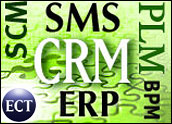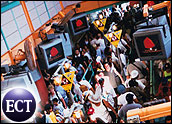
Consumer and business product manufacturers are challenged to form and maintain relationships with their end users. One-off promotions like contests or sweepstakes can help to supply manufacturers with some contact information for their customers, but most times, not much else.
Unless there is a point-of-sale system in place that refreshes point accumulation status to a master database, the burden of redemption activity in a multi-brand business-to-business loyalty coalition falls to the end-user members. These members typically have to mail receipts in for points and initiate their exchange for awards, said Steve Thornberry, senior vice president of Partners in Loyalty Marketing, a consultancy in Chicago.
In this case, manufacturer participants become ultra-reliant on the end users’ initiative in order to achieve long-term success with such programs, Mr. Thornberry said. “The key caveat is that it’s got to be a significant enough reward for the member to endure the paperwork and everything,” he said.
United Front
A group of building materials manufacturers sought something more than haphazard snapshots of their market. They wanted to establish relationships that would result in lasting brand awareness and loyalty. In January, a program dubbed Builder’s Circle united several building product manufacturers including Maxim Lighting from Los Angeles, flooring company Armstrong, Atrium Windows and Doors, and Tempstar heating and cooling products. The project was designed by Loyaltyworks, an Atlanta-based marketing company.
The coordinated program doles out merchandise, travel, sporting goods, even customized hunting and fishing trips to bait lasting activity in the program and loyalty to its sponsors, which today include 13 manufacturers covering a total of 33 brands.
Loyaltyworks has tried to make program participation easier for members by sending pre-printed award redemption forms and postage-paid envelopes to the small business participants in their welcome kits and following up member submissions with confirmations by mail or e-mail that include points updates. The program even allows new members to submit receipts for affiliated brand purchases from the 30 days prior to their joining the Builder’s Circle.
“Those who are active are very active,” Scott May, general manager of Builder’s Circle, told CRM Buyer. “Once they get to see how easy it is to submit invoices, they often submit several times a month.”
Reaching Smaller Clients
Some sponsors in the coalition had built established relationships with large-volume buyers but were lacking when it came to dealing with small and medium-sized construction firms. “For the longest time, all loyalty programs coming out of manufacturers were for large-volume buyers,” said May.
Denis Rehm, director of builder sales for Maxim Lighting, knew that had to change.
“[Small and medium]-size businesses are difficult for manufacturers to have a direct communication with,” Rehm told CRM Buyer. With these smaller customers, purchase volume often pales in comparison to that of home development mega-corporations. In addition, the small and medium-sized builder/remodeler market shifts with seasons and socioeconomic conditions so the players fade in and out of the scene.
As such, dealers and distributors find little incentive to push a loyalty program among those companies. At the same time, however, together these players represent 75 percent to 80 percent of the home building and remodeling market. They can’t be ignored.
Treasure Trove of Data
This realization contributed to Maxim Lighting’s interest in the Builder’s Circle program. In the 10 months since the program’s launch, the results and rapid point accumulation and redemption have surprised Rehm. Lighting showrooms that Maxim supplies have reported increased sales, and Rehm finally has access to lists of end user names and data.
More than 2,600 small and medium-sized businesses have become members of the Builder’s Circle program, hitting Loyaltyworks expectations, said May.
“When a builder joins the program, we are made aware of that, and one of the first things we do is make sure they have our catalogs, information about where they can buy Maxim products locally and the names and numbers of our sales reps in their area. We jump right on that,” Rehm said. “We get detailed information about the builders. That’s another reason we joined the program.”
Working on its own, he said, Maxim could never get the deep data on such a large number of companies as it now receives. Data includes contractors’ building locations, what types of projects they work on and the average square footage of a job and the frequency with which they buy each coalition brand.
Additionally, cost savings go along with any coalition loyalty program because the risks and the funding requirements fall to a group of sponsors, not just a single brand.
Customized Rewards
Each manufacturer sets its own reward scale, relating points to units purchased, but has access to the entire enrollee base through which they can gather general member information that may be helpful for in observing market trends.
The program’s manager hopes the Builder’s Circle program will continue to grow, which will allow for even more data analysis for sponsors.
“When we get 20,000 to 30,000 members, we can do segmentation and modeling and understand not only who’s buying but develop more relevant communication and offers,” said May. “ROI is definitely part of our approach. We want to make sure we prove it for our sponsors as well as ourselves.”













































Social CRM
See all Social CRM